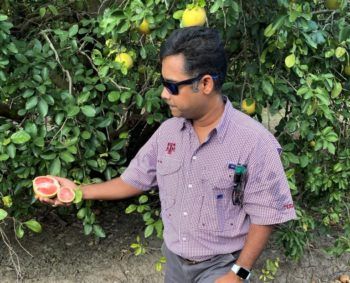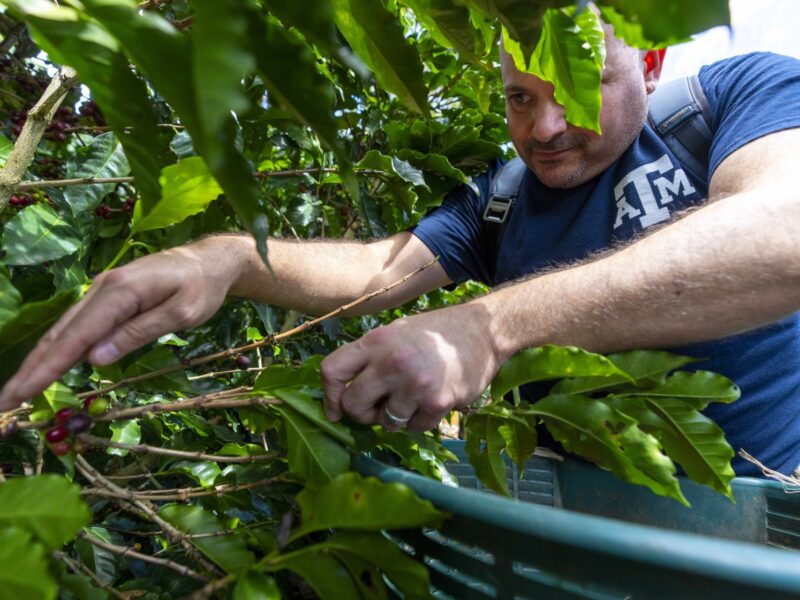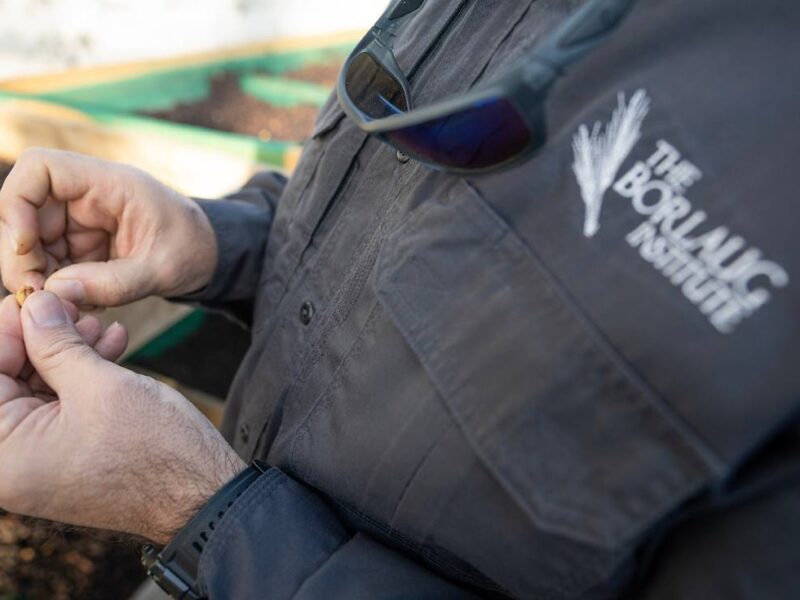Researchers Focus On Gene-Editing Technology To Kick-Start Crop Regeneration

High-value food crops that face various impediments in breeding new varieties are getting some attention from a collaboration of researchers using the CRISPR-Combo gene-editing technology.
While gene-editing technology has improved crop breeding and adaptation, the process of regrowing a plant from edited cells is costly, lengthy and unpredictable. Furthermore, this process, referred to as regeneration, is difficult to achieve with existing methods for many popular crops.
Texas A&M AgriLife will be among those participating in a Foundation for Food and Agriculture Research (FFAR) grant of $664,000 to develop a technology that can both edit a crop’s genes and speed up crop regeneration.
The grant, primarily awarded to the University of Maryland through the FFAR Crops of the Future Collaborative, also includes Texas A&M AgriLife and the U.S. Department of Agriculture. Matched funds bring the total project investment to $739,000.
This grant was awarded as part of the Accelerated Crop Breeding program, designed to speed up the development of diverse crop species suited to sustainable agriculture and improved human nutrition.
Researchers are developing a CRISPR-Combo system that will use CRISPR gene-editing technology to kick-start the regeneration process. The team is led by Yiping Qi at UMD; Kranthi Mandadi, Texas A&M AgriLife Research scientist and associate professor in the Texas A&M University College of Agriculture and Life Sciences‘ Department of Plant Pathology and Microbiology; and Randall Niedz, a USDA research geneticist at Fort Pierce, Florida,
Crop Improvement Through Genome Editing
The researchers are initially focusing on introducing traits that reduce allergen content in carrots, promote herbicide and disease resistance in potatoes, and promote disease resistance in citrus.
“Compared to conventional breeding, genome-editing technologies can accelerate crop breeding with high precision, less time and cost,” Qi said. “This project aims to make genome editing in crops more efficient and successful, which will translate into improved crop production and enhanced nutrition in the produce we eat with sustainable inputs. This can help sustain a growing global population.”
Qi and Mandadi are previous awardees of FFAR’s New Innovator in Food and Agriculture Research Award, which provides early career scientists the investment needed to propel them into successful research careers.
“We are delighted to join forces with UMD and USDA and develop innovative CRISPR-based technologies to improve vegetable and fruit crops of relevance to Texas and U.S. agriculture,” said Mandadi, who is based at the Texas A&M AgriLife Research and Extension Center at Weslaco.
Gene Editing And Crop Regeneration
“The limitations of current regeneration methods are throttling the development of enhanced nutritional and agronomic traits,” said Jeff Rosichan, director of the Crops of the Future Collaborative. “Breakthroughs in gene editing are constrained if they don’t lead to viable, affordable crops. Applying proven gene-editing technology to the problem of crop regeneration bottlenecks will more easily produce crops with enhanced nutrition and agronomic benefits.”
Currently, only a small number of plant species respond well to regeneration techniques that involve cell culturing — growing cells outside the plant in a suitable environment — though the reasons for this are unclear to researchers. Even among crops that regenerate, the process poses risks.
Regeneration also takes a long time, forcing researchers to predict which crops and traits will be in demand years in advance. And there are often multiple undesired and unpredictable changes to genomes that occur during the process.
The CRISPR process injects RNA into cells to edit genes to promote desired traits in crops. With the CRISPR-Combo system, gene-editing RNA will be combined with RNA that activates genes controlling growth. This will accelerate the cell culturing stage by making the cells more amenable to regeneration.
Building On Current Texas A&M AgriLife Research
With his colleagues, Mandadi has been working on developing new biological technologies to fight fastidious, or “unculturable,” insect-vectored pathogens using so-called plant “hairy roots.” The results of their recent work have been published in Nature Communications.
Mandadi and his team have also demonstrated the utility of using “hairy roots” for evaluating CRISPR-based solutions. In this new project, his team will combine the hairy root technology with CRISPR-Combo approach to expedite screening and development of genome-edited potato and citrus varieties resistant to insect-vectored diseases such as zebra chip and citrus greening, respectively.
“Texas A&M AgriLife is honored to receive yet another grant from FFAR,” said Henry Fadamiro, chief scientific officer and associate director of AgriLife Research. “These reflect the growing reputation of Texas A&M AgriLife in cutting-edge research and innovation and are also the reason we are continuing our internal seed grant programs focused on vector-borne diseases.
Fadamiro said Mandadi’s 2019 seed grant is a prime example of that cutting-edge research.
“Those seed funds allowed him to pilot the research that ultimately led to this collaboration project with the University of Maryland and the USDA-ARS and securing additional funding from FFAR,” Fadamiro said.
This article by Paul Schattenberg originally appeared on AgriLife Today.





